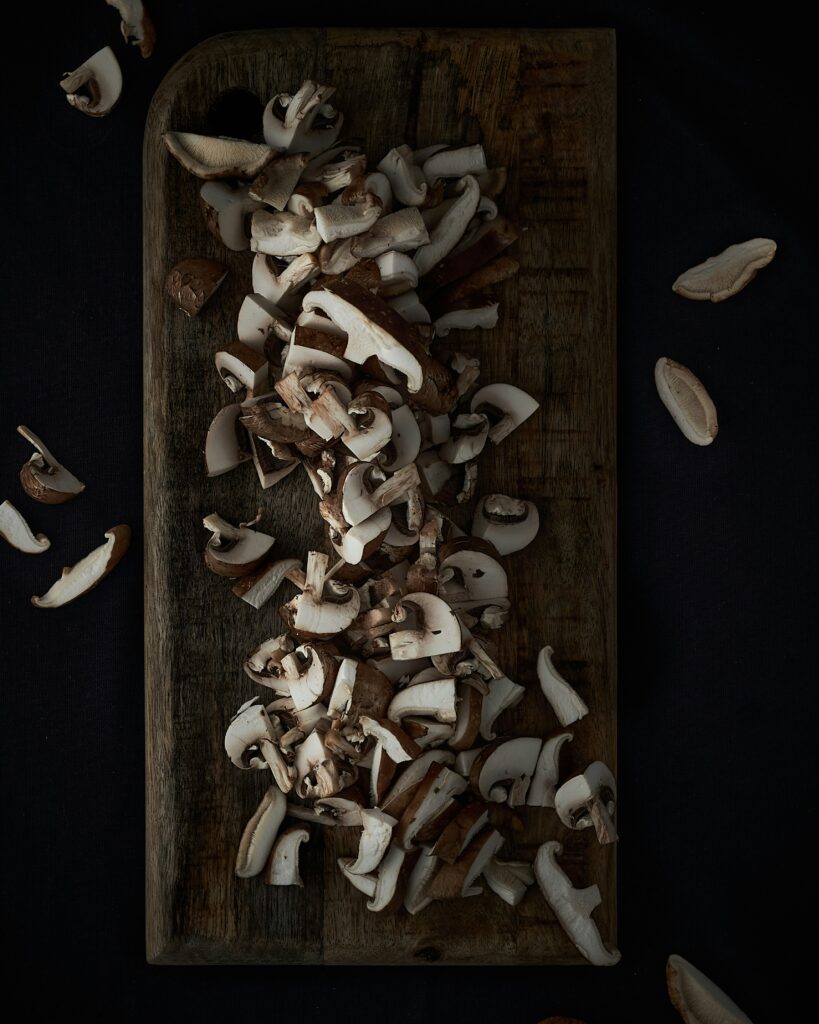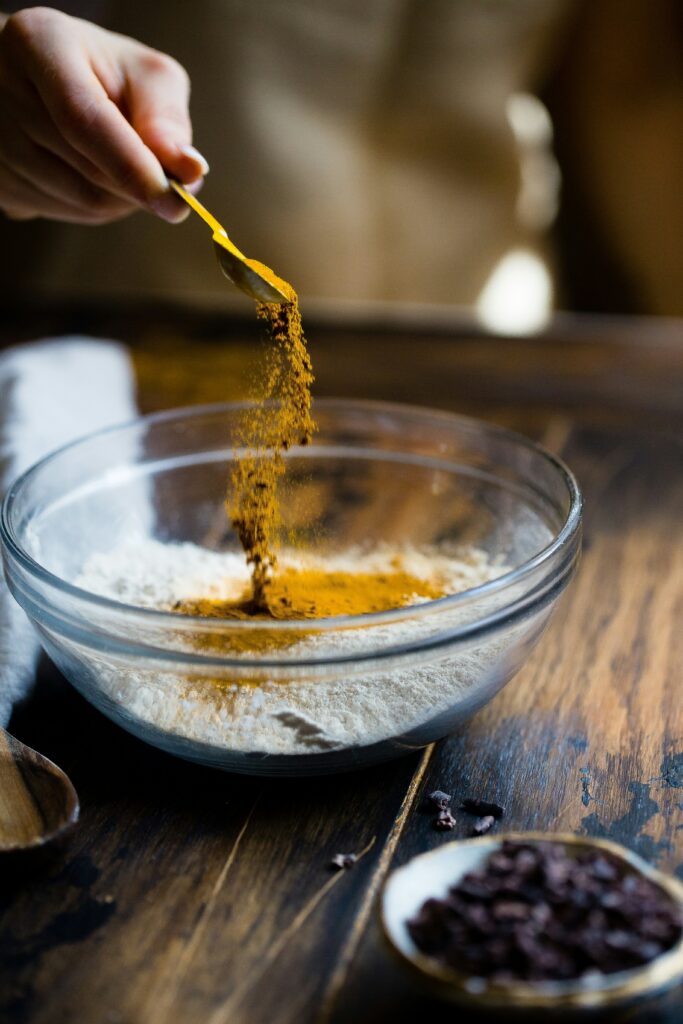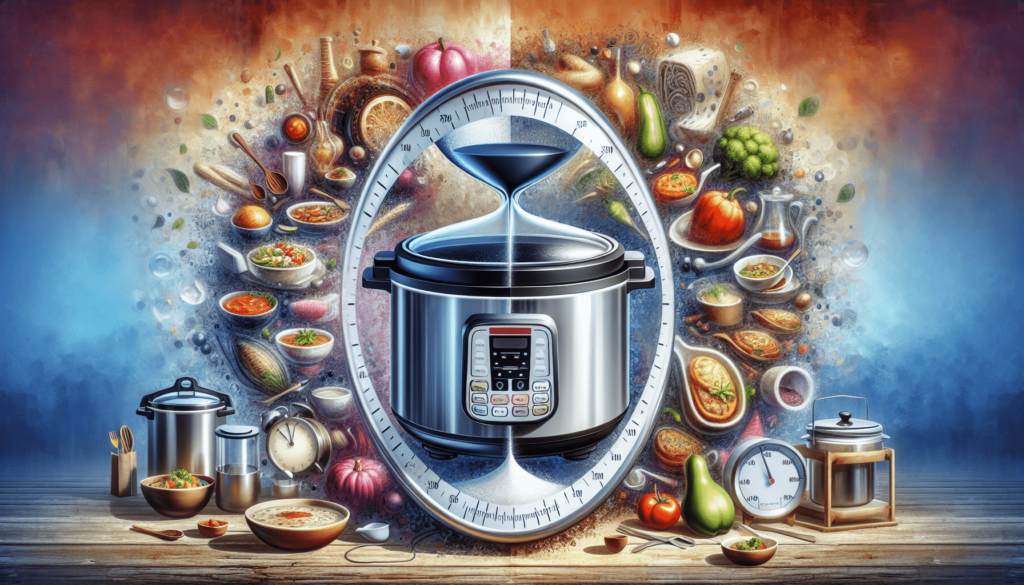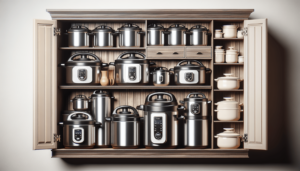Curious about the culinary world’s latest gadgets? Look no further! Today, we are here to unravel the mystery behind two popular kitchen appliances: the slow cooker and the Instant Pot. Many of us have heard of these kitchen powerhouses, but do we truly understand what sets them apart? From their cooking speeds to the versatility of each device, we are about to embark on a journey where we will uncover the secrets behind these cooking wizards. So sit back, relax, and let us quench your thirst for knowledge about slow cookers and Instant Pots. Get ready to tantalize your taste buds and revolutionize your cooking experience!

Design and Functionality
Size and Shape
When it comes to the size and shape, both slow cookers and Instant Pots have their unique features. Slow cookers typically have a round or oval shape, with varying capacities ranging from small to large. This shape allows for even distribution of heat and ensures that the food is cooked thoroughly. In contrast, Instant Pots have a more compact and rectangular design, making them suitable for smaller kitchens or limited counter space. Their tall and narrow shape allows for stacking or layering food, which can be advantageous for certain recipes.
Cooking Methods
Slow cookers and Instant Pots also differ in terms of cooking methods. Slow cookers primarily use low, constant heat over a longer period to cook the food. This method is perfect for dishes like stews, soups, and roasts, as it allows the flavors to develop and the meat to become tender. On the other hand, Instant Pots offer various cooking functions, including pressure cooking, sautéing, steaming, and even baking. Their ability to cook under pressure enables faster cooking times, making them ideal for time-conscious individuals or those who prefer quick meals without compromising on taste.
Cooking Time
Slow Cooker: Longer Cooking Time
One significant advantage of using a slow cooker is the longer cooking time it affords. This is particularly useful for busy individuals who can prepare their ingredients in the morning, set the slow cooker, and come back to a delicious, fully cooked meal at the end of the day. Slow cookers work by gently simmering food for extended periods, allowing flavors to meld together, and meats to become tender. While this longer cooking time may not be suitable for those who need a quick meal, it can be a convenient option for certain recipes.
Instant Pot: Shorter Cooking Time
In contrast, the Instant Pot offers shorter cooking times due to its pressure cooking feature. The sealed environment inside the pot increases the pressure, which raises the boiling point of water and speeds up the cooking process. This means that dishes that typically take hours to cook, such as roasts or stews, can be prepared in a fraction of the time. The Instant Pot’s ability to reduce cooking time makes it a popular choice for individuals who want to enjoy flavorful meals without spending hours in the kitchen.
Versatility
Slow Cooker: Limited Cooking Options
While slow cookers excel at their primary function – slow cooking, they may have limited cooking options compared to Instant Pots. Slow cookers are primarily designed for braising, stewing, and simmering dishes. They may not have the capability to perform other cooking tasks, such as sautéing or baking. If you rely heavily on these additional cooking methods, a slow cooker may not be the most versatile option for you.
Instant Pot: Multiple Cooking Functions
If versatility is what you seek, then the Instant Pot has got you covered. With its multiple cooking functions, this kitchen appliance allows you to sauté, steam, pressure cook, and even bake. Whether you want to sear meat, make fluffy rice, or whip up a homemade cheesecake, the Instant Pot can handle it all. This versatility makes it a valuable addition to any kitchen, as it eliminates the need for multiple appliances and gives you the freedom to explore a wide range of recipes.
Ease of Use
Slow Cooker: Set It and Forget It
One of the biggest appeals of using a slow cooker is its simplicity and ease of use. With just a few steps, you can set up your ingredients, select the desired temperature, and let the slow cooker do its magic. Once everything is set, you can go about your day and come back to a perfectly cooked meal. This “set it and forget it” feature is great for busy individuals who want a hassle-free cooking experience.
Instant Pot: Multiple Settings and Controls
While the Instant Pot may have a bit of a learning curve, once you familiarize yourself with its settings and controls, it becomes quite user-friendly. Instant Pots offer a range of pre-programmed settings that allow you to select the cooking method, pressure level, and cooking time with ease. Additionally, some models even have smart features, such as Wi-Fi connectivity or app integration, which further enhance the convenience of using an Instant Pot. So, if you’re someone who loves to experiment with various cooking methods and settings, the Instant Pot may be the perfect choice for you.

Pressure Cooking Feature
Slow Cooker: No Pressure Cooking
One significant difference between slow cookers and Instant Pots is the absence of pressure cooking functionality in slow cookers. Slow cookers operate solely on low, constant heat, which means they don’t have the ability to create the high-pressure environment necessary for pressure cooking. While this may not be a dealbreaker for those who primarily use slow cookers for braising or simmering, it does limit the range of recipes you can prepare.
Instant Pot: Can Cook Under Pressure
The Instant Pot’s standout feature is undoubtedly its ability to cook food under pressure. Pressure cooking is a game-changer when it comes to saving time in the kitchen. By trapping steam inside the pot, the Instant Pot creates a high-pressure environment that cooks food faster while retaining moisture and flavors. This makes it perfect for cooking tough cuts of meat, beans, or even creating quick one-pot meals. The pressure cooking feature gives the Instant Pot a significant advantage over slow cookers in terms of versatility and efficiency.
Safety Features
Slow Cooker: Basic Safety Features
Slow cookers generally feature basic safety mechanisms to ensure safe operation. These may include sturdy handles for easy transportation, heat-resistant materials to prevent burns, and automatic shut-off timers to prevent overcooking or accidents. While slow cookers do not have as many advanced safety features as Instant Pots, they are designed with the user’s safety in mind.
Instant Pot: Advanced Safety Features
Instant Pots are equipped with advanced safety features to provide users with peace of mind. These features often include lid-locking mechanisms, pressure release valves, and sensors that detect potential issues like excess pressure. This helps prevent accidents and ensures safe pressure cooking. The Instant Pot’s focus on safety makes it a reliable and trusted kitchen appliance among users.

Cost
Slow Cooker: Affordable
One of the advantages of slow cookers is their affordability. Slow cookers come in a range of price points, making them accessible to a wide range of budgets. Even high-quality slow cookers with larger capacities tend to be more budget-friendly compared to Instant Pots. If you’re looking for a cost-effective cooking solution that still delivers delicious meals, a slow cooker may be the way to go.
Instant Pot: More Expensive
On the other hand, Instant Pots generally come with a higher price tag compared to slow cookers. This is primarily due to the inclusion of advanced technology, additional cooking functionalities, and smart features. While the upfront cost may be higher, many users find that the versatility and time-saving benefits of an Instant Pot justify the investment. If you’re willing to spend a bit more for a multi-functional kitchen appliance, the Instant Pot may be worth considering.
Technology and Smart Features
Slow Cooker: Basic Technology
Slow cookers are often known for their simplicity, and as a result, they do not boast advanced technology features. These appliances usually consist of a heating element, a control knob, and a basic timer. While slow cookers may not have the bells and whistles of their Instant Pot counterparts, their straightforward design offers reliability and ease of use.
Instant Pot: Advanced Technology and Smart Features
Instant Pots take kitchen technology to the next level. These appliances often come with features like digital displays, touch controls, and programmable settings. Some models even offer Wi-Fi connectivity, allowing you to monitor and control your cooking remotely. Smart features, such as recipe apps and voice control compatibility, further enhance the convenience and versatility of the Instant Pot. If you’re an avid tech enthusiast or simply enjoy the convenience of smart appliances, the Instant Pot’s advanced technology may be a major draw for you.

Cleaning and Maintenance
Slow Cooker: Easy to Clean
Slow cookers are generally easy to clean due to their removable and dishwasher-safe stoneware or ceramic inserts. After the cooking process is complete and the slow cooker has cooled down, you can simply remove the insert and wash it in the sink or load it in the dishwasher. The outer shell of the slow cooker can be wiped clean with a damp cloth. Quick and hassle-free cleaning is undoubtedly a bonus for those who prioritize easy maintenance.
Instant Pot: Extra Components Require Careful Cleaning
Cleaning an Instant Pot may require a bit more effort due to the additional components and the presence of electronic elements. Aside from the stainless steel cooking pot, which is generally dishwasher safe, there are other parts like the silicone sealing ring, steam rack, and accessories that may require extra attention. These components should be hand-washed and thoroughly dried to prevent any residual odors or moisture. While the cleaning process may be slightly more involved, proper maintenance ensures the longevity and performance of the Instant Pot.
Space Requirements
Slow Cooker: Requires More Counter Space
Slow cookers, especially larger-sized models, can take up a considerable amount of counter space. Their round or oval-shaped design and larger capacities may require designated space on your countertop. If you have a limited kitchen space or prefer a clutter-free environment, the size of a slow cooker might be a factor to consider.
Instant Pot: Compact Size
One of the advantages of the Instant Pot is its compact size. With its rectangular shape and vertical design, it takes up less counter space compared to slow cookers. The compact size of the Instant Pot makes it suitable for smaller kitchens or those with limited counter space. If you’re looking for a cooking appliance that doesn’t hog your countertop, the Instant Pot’s compact design is a definite plus.
In conclusion, both slow cookers and Instant Pots have their unique strengths and features. Slow cookers prioritize simplicity, longer cooking times, and affordability, making them a great choice for those who enjoy the “set it and forget it” approach to cooking. On the other hand, Instant Pots offer versatility, shorter cooking times, advanced technology, and smart features, which appeal to individuals seeking convenience and efficiency in the kitchen. Ultimately, the choice between a slow cooker and an Instant Pot depends on your cooking style, preferences, and kitchen needs.




